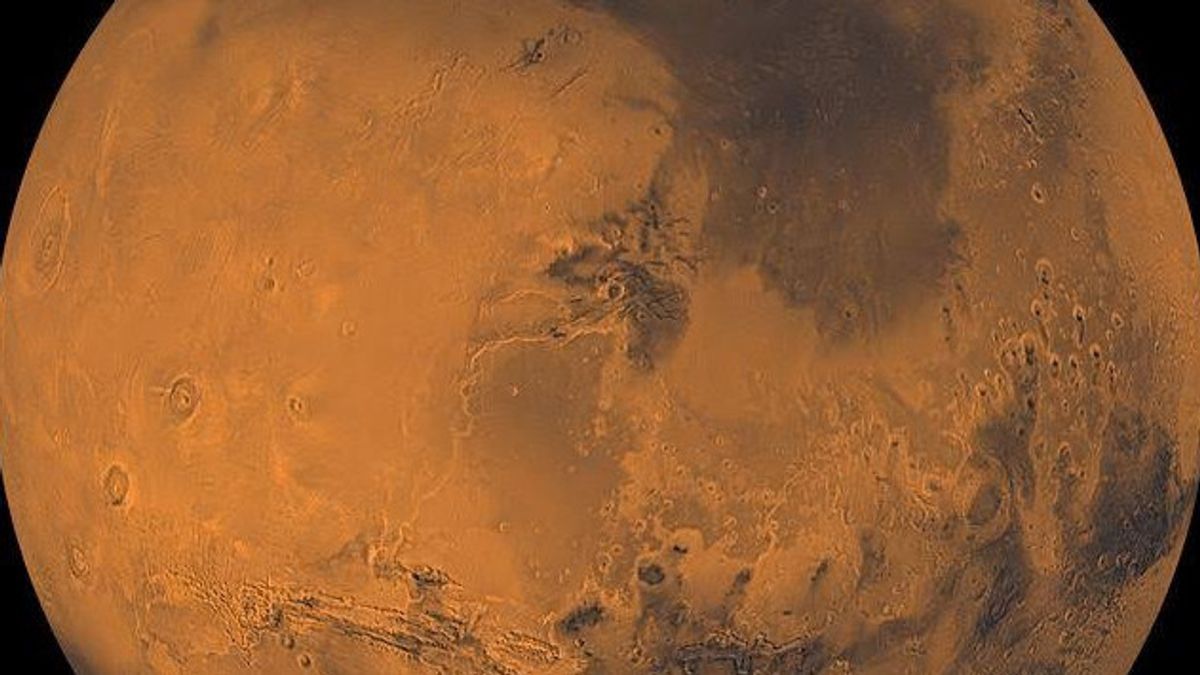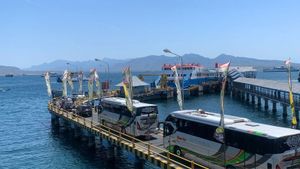JAKARTA - The Chinese Zhurong rover is claimed to have succeeded in proving that Mars once had such heavy water and was located in the planet's tiny dunes.
The evidence was examined by scientists through data obtained by Zhurong, implying the Red Planet was a watery world rich in salt some 400,000 years ago.
This report comes after the Zhurong rover has not been built since hibernation in Mars winter nearly a year ago.
Most likely, because the solar panels are covered in dust that causes their power sources to stop and prevent the rover from operating again.
Prior to this experience, Zhurong observed salt-rich dunes with cracks and crusts, which scientists said were most likely mixed with frozen dew or melting morning snow several hundred thousand years ago.
Scientists revealed that the estimated timeframe occurred when cracks and other dune features formed at the Utopia Organizer Mars, a large area in the northern hemisphere of about 1.4 million to 400,000 years ago or even later.
As Zhurong travels near the target dune, which is very small compared to the two-story dune studied by NASA's Curiosity rover elsewhere Mars, the laser-induced breakdown spectrometer (MarSCoDe) instrument on board the rover converts sand grains into millimeter particles.
However, the water containing the salt did not last long. The temperature on Mars swings wildly and spikes in the morning between 5 a.m. and 6 a.m., so that the water evaporates and leaves salt and other new minerals that then seep in between sand grains in the dunes, blending to form the crust.
VOIR éGALEMENT:
Chemical composition proves the presence of hydrated minerals such as sulfate, silica, iron oxide and chloride. According to scientists, these minerals formed in the presence of low latitude water at the end of the Amazon era on Mars, which scientists previously considered bone dry scientists.
In a study published in Science Advances, scientists stated that studying the structure and chemical structure of these dunes could provide insight into the possibility of water activity during that period, and a decent residential area.
"We think it could be a small amount, no more than a layer of water on the surface," said co-author Xiaoguang Qin of the Institute of Geology and Geophysics.
Explorers do not directly detect water in ice form. But Qin said computer simulations and observations by other spacecraft on Mars show that currently or at certain times of the year, conditions are suitable for water emergence.
Launched in 2020, Zhurong was named after the god of fire in Chinese mythology, he arrived on Mars in 2021 and spent a year roaming before hibernation in May last year.
The rover operates longer with six wheels embedded from the initial target, covering a distance of more than one mile. This was quoted from Space and Phys, Tuesday, May 2.
The English, Chinese, Japanese, Arabic, and French versions are automatically generated by the AI. So there may still be inaccuracies in translating, please always see Indonesian as our main language. (system supported by DigitalSiber.id)














